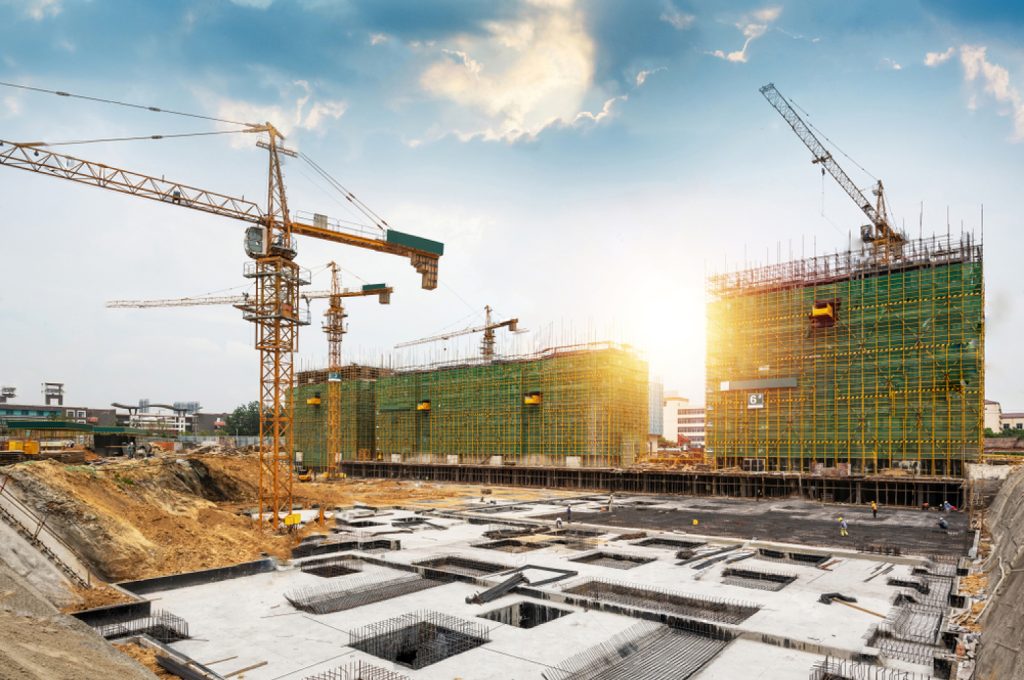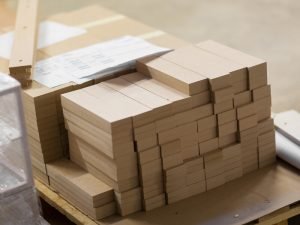
This study explores the influence of formwork materials on the quality of concrete structures and optimization strategies. Formwork materials play a key role in concrete construction and directly affect the strength, stability and durability of the structure. This article first reviews different types of formwork materials and analyzes their applications in concrete structures in detail. Subsequently, through comparative experiments and numerical simulations, the possible impact of formwork materials during the construction process was discussed, and possible quality defects and structural problems were discovered. Finally, an optimization strategy is proposed, including rational selection of formwork materials, improvement of construction technology, and strengthening of monitoring measures to ensure that the quality and durability of the concrete structure are maximized.
As an important part of the modern construction field, the quality and stability of concrete structures are crucial. As an important factor in concrete construction, formwork materials are directly related to the performance and life of the structure. Therefore, it is particularly important to study the influence of formwork materials on the quality of concrete structures and their optimization strategies. This article aims to explore the problems that may be caused by different types of formwork materials during the construction process and propose corresponding improvement strategies to ensure that the quality of concrete structures reaches the optimal level. Through this research, we will provide more scientific and robust guidance for concrete structure construction, thereby promoting the development of the construction field.
Ⅰ.The influence of formwork materials on the strength and stability of concrete structures
Formwork materials play a vital role in the construction of concrete structures and have a profound impact on the strength and stability of the structure.
1.The formwork material serves as a support during concrete pouring and directly bears the weight of the concrete and the construction load. Therefore, the strength, stability and stiffness of the formwork material play a decisive role in the overall load-bearing capacity of the concrete structure.
2.The flatness and geometric shape of the formwork material have a direct impact on the quality of the concrete surface. Uneven formwork surfaces may lead to uneven concrete surfaces and cracks, affecting the beauty and durability of the structure. Therefore, during the selection and installation of formwork materials, special attention should be paid to their surface quality and geometric conformity.
3.The material of formwork is also closely related to the performance of concrete. For example, using wooden formwork that is too absorbent can cause an imbalance in the concrete’s water-cement ratio, affecting the strength and durability of the concrete. Therefore, choosing appropriate formwork materials, such as composite formwork or specially coated wooden formwork, can effectively improve the performance of concrete.
It is worth noting that the correct use and maintenance of formwork materials during construction is equally important. Incorrect operations during installation or damage to the formwork materials may lead to structural defects and quality issues. Therefore, it is necessary to strictly control the quality of formwork materials, strengthen the training of construction personnel, and take corresponding maintenance measures to ensure the stability and reliability of formwork materials during the construction process.
In summary, the influence of formwork materials on the strength and stability of concrete structures is very important. Selecting appropriate formwork materials, ensuring their quality and correct use and maintenance play an important role in ensuring the excellent performance and long-term stable operation of concrete structures. During the construction process of concrete structures, great attention should be paid to the selection and management of formwork materials to ensure the ultimate realization of structural quality.
Ⅱ.Quality defects and structural problems that may be caused by formwork materials in the construction of concrete structures
In the construction of concrete structures, the quality and usage of formwork materials are directly related to the stability and durability of the structure. If no attention is paid to the selection, installation and maintenance of formwork materials, various quality defects and structural problems may occur.
1.Insufficient flatness of the formwork material may cause the concrete surface to be uneven or uneven. These poor surface conditions not only affect the appearance of the structure, but may also cause accumulation of water or dust during use, reducing the durability and service life of the structure.
2.Material dimensional deviations and geometric inaccuracies will directly affect the geometric size and shape of the structure. If the formwork is installed improperly or the size deviation is large, it may cause deformation, distortion or deviation of the concrete structure, thus affecting the overall stability of the structure.
Improper spacing and placement of formwork supports are also potential problems. If the supports are too widely spaced or improperly arranged, the formwork may deform, causing water seepage and leakage in the concrete mass. In addition, unstable formwork support will also cause the formwork to shift during concrete pouring, affecting the construction quality of the structure.
On the other hand, the material and water absorption of the formwork material will also affect the quality of the concrete. If wooden formwork with high water absorption is used, it may lead to an imbalance in the water-cement ratio of the concrete, affecting the strength and durability of the concrete.
In addition, the formwork materials may be mechanically damaged or corroded by moisture during use, causing the surface of the formwork to be uneven or cracked, affecting the surface quality of the concrete and the performance of the overall structure.
To sum up, the quality defects and structural problems that may be caused by formwork materials in the construction of concrete structures cannot be ignored. To ensure structural quality, quality must be strictly controlled during the selection, installation and maintenance of formwork materials to ensure their flatness, dimensional accuracy and stability. At the same time, construction personnel should receive professional training to ensure the correct use of formwork materials and take corresponding adjustment measures according to specific conditions to ensure the safety and durability of the concrete structure.
Ⅲ.Optimization Strategies: Select appropriate formwork materials, improve construction technology and strengthen quality control
Optimization strategies are a key step to ensure the quality of concrete structures.
1.Selecting the appropriate template material is the basis of the optimization strategy. When selecting formwork materials, factors such as the type of structure, purpose, load requirements, and construction environment should be considered. Reasonable selection of the strength, stability and flatness of formwork materials can effectively improve the construction quality of concrete structures. For example, high-strength composite material formwork is used in key parts such as beams and columns, and wooden formwork with special coatings is used at the corners to better meet the requirements of different parts.
2.Improving construction technology is an important part of the optimization strategy. Reasonable optimization of construction technology can minimize quality defects and structural problems caused by formwork materials. For example, during the formwork installation process, precise measurement and positioning technology is used to ensure that the geometric dimensions and layout of the formwork meet the design requirements and avoid dimensional deviations and morphological problems in the structure. At the same time, when pouring concrete, adopting appropriate pouring sequence and controlling pouring speed can avoid formwork deformation and concrete surface defects.
Strengthening quality control is a key part of the optimization strategy. A strict quality control system can promptly detect and solve problems during the use of formwork materials, ensuring the stability and controllability of the construction process. Before construction, the formwork materials should be comprehensively inspected and tested to ensure that their quality meets standards. During the construction process, professional quality monitoring personnel need to be equipped to monitor and record the installation and use of formwork materials in real time. If the formwork is found to be deformed, damaged or material defective, timely measures should be taken to repair or replace it.
In addition, professional training and technical guidance for construction personnel are also important links. Improving the technical level and quality awareness of construction personnel so that they can master the correct use of formwork materials and construction techniques will help reduce the risk of structural quality problems.
In summary, optimization strategies include selecting appropriate formwork materials, improving construction techniques, and strengthening quality control. Through reasonable selection of materials, optimization of construction technology and strict quality control, the probability of quality defects and structural problems caused by formwork materials can be effectively reduced, ensuring the quality and stability of concrete structures, and further promoting the development of the construction field. The effective application of these optimization strategies will provide scientific guidance for concrete structure construction, improve construction quality and efficiency, and will also have a positive impact on the sustainable development of the entire construction industry.

